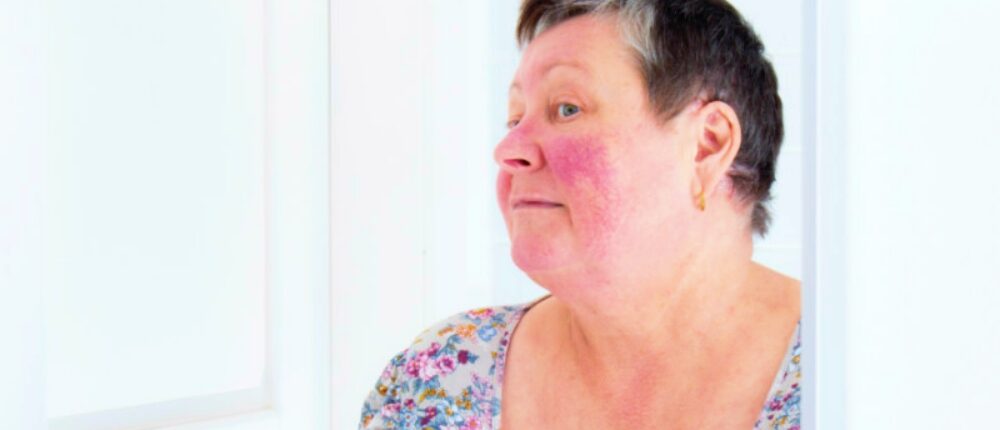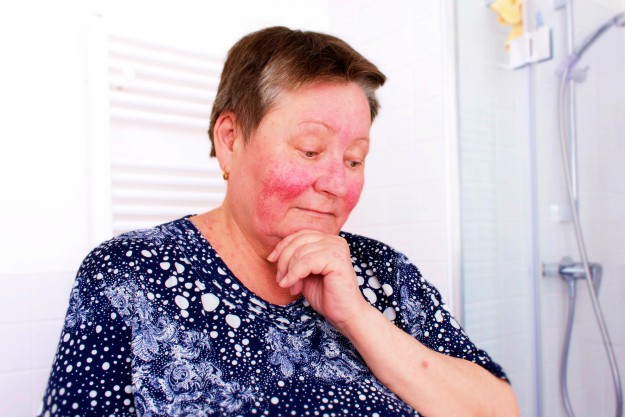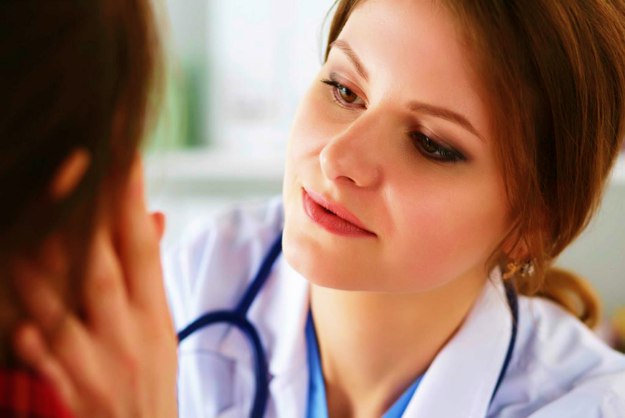

What is rosacea? Rosacea is a chronic skin condition that affects millions, yet many people are willing to “put up” with it. Why do some people get it? The answer to what causes rosacea can be somewhat complex. Maybe that’s why so many people focus on hiding the problem, rather than improving it. Some hide the redness and patchiness beneath makeup, and others simply ignore it. Yet there are ways to treat this not so “rosy” skin condition.
In this article:
What Is Rosacea and What Can You Do About It?
Understanding Rosacea
What causes rosacea? The medical reason for your specific rosacea might be a family history of the skin condition, abnormal blood vessels, or even microscopic mites. It’s known that fair-skinned women who are at least 30 are more likely to get rosacea. However, men can develop a specific rosacea subtype that causes nose bumpiness. Of course, darker-skinned people, as well as children and teens, are also not immune to this wide-ranging skin disorder.
Types of Rosacea

Rosacea involves inflammation of facial skin at the surface level. How that inflammation manifests itself depends on the individual. A constantly-flushed look is one classic symptom. Visible blood vessels and bumpiness are also common in rosacea patients. There’s still no definite answer to what causes rosacea, but the condition is often aggravated by extreme heat. That heat can come from direct sunlight, sauna-like conditions, or eating spicy food.
There are several sub-types of rosacea. For example, men are more prone to rhinophyma. This rosacea type causes thickened bumps on the nose and broken facial capillaries, among other symptoms. Middle-aged women are more prone to papulopustular rosacea, characterized by acne, broken capillaries and raised patches.
Even if you pin down which type of rosacea you have, the symptoms tend to overlap. For example, you might have both rosacea acne and thickened skin around your nose.
Common Symptoms
Given the different sub-types of rosacea, few people will have every potential symptom, but most patients have more than one characteristic of the skin condition. Among the classic signs of rosacea are:
Redness
The “rose-colored” origin of rosacea’s name is no coincidence. Persistent redness usually occurs in the center part of the face, especially the nose and cheeks.
Visible Capillaries
The tiny blood vessels in your face are vulnerable to inflammation. People with rosacea may experience just one small patch of visible capillaries. Others suffer from widespread visible blood vessels on their faces.
Flushing
As if persistent redness wasn’t enough, the second form of rosiness can overtake people with rosacea. “Flushing” is a temporary bloom of redness. Many people tend to redden a bit when embarrassed or when exposed to heat or the wind. But for people with rosacea, the color is much deeper, and the burning sensation is much more pronounced. Sometimes, intense sweating accompanies the flushing.
Bumpy Skin
Depending on the subtype of rosacea a person has, some sufferers experience acne-like bumps — even in middle age. Rosacea acne differs from “classic” acne. The bumps characterizing rosacea outbreaks are either pus-filled or solid, rather than oil-filled. Along with acne bumps, some people develop raised, thickened skin on the cheeks or nose.
Increased Sensitivity
People with rosacea are more likely to experience facial stinging or burning compared to the general population. Whether their complexions are reacting to a new face wash or too much sun, rosacea sufferers are much more susceptible to even mild irritants.
Eye Issues
Dryness, lid swelling, and grittiness in the eyes occur in about half the people who suffer from rosacea. In fact, it’s sometimes the first sign of the chronic condition, happening even before facial redness appears.
How to Treat Rosacea

Preventing flare-ups and reducing their severity when they do occur are the best ways to treat rosacea. There are currently no known cures, but many people have luck combining some classic methods to reduce redness, bumpiness, and other symptoms. These are:
Avoiding Triggers
What triggers one rosacea patient may have no effect on another. That’s why it’s a good idea to keep track of what you were eating or experiencing before an outbreak. Spicy foods are a common trigger, so try to pass up that sriracha omelet or the Thai “inferno” soup. Saunas and steam rooms can also provoke visible blood vessels and red patches for people who have the skin condition.
In fact, almost anything that causes you to sweat heavily is likely to worsen rosacea. This includes strenuous exercise. You don’t have to give up your cardio altogether. Just choose activities that don’t overheat you quite as much as hot yoga or long runs. Consider taking long, slow walks or swimming laps instead.
Preventing Stress
Stress is a classic flare-up culprit for many rosacea sufferers. Try undertaking mindful breathing techniques whenever you get anxious. To decrease how often you feel stress, consider meditation, gentle yoga, or massages.
Sun and wind exposure are also notorious rosacea triggers. Wear hats and sunglasses in sunny weather, and a scarf or face mask on cold, blustery days. Use sunscreen regularly, even on overcast days.
One trigger you probably don’t want to hear about? Your nightly glass of red wine can be another cause of redness and spidery cheeks. Alcohol tends to widen the blood vessels. With more blood pouring into the vessels, they become more visible beneath your skin.
Considering Medication
Some rosacea patients get good results with prescription oral antibiotics or anti-inflammatory ointments. There are pros and cons to prescription medication for rosacea. Some prescriptions are too costly, and they also pose a higher risk of side effects than gentler treatments do. Weigh the benefits and risks of different medication options with your dermatologist.
Seeking Professional Treatments
Are the visible blood vessels on your cheeks bothering you? Laser therapy can make them less noticeable. People who have rough skin around their noses may find better results with professional microdermabrasion. Laser and microdermabrasion treatments can be costly, however. More than one visit is usually needed.
Using Gentle, Protective Skincare Products
Non-irritating facial cleansers and moisturizers are your best bet when it comes to the best rosacea treatment. Rosacea skincare products have ingredients that target specific aspects of the skin disorder.
Looking for Moisturizing Ingredients
Look for facial cleansers and healing creams with at least some of these characteristics:
- Highly moisturizing. People with rosacea need special protection from the elements. It’s also crucial that their complexions retain moisture. Hydrating ingredients that also provide a protective barrier include amaranth oil, honey, shea butter, avocado oil, and jojoba oil.
- Healing. Irritated skin reacts well to calming botanicals. Among the most soothing are aloe vera, carrot seed essential oil, and amaranth oil. The skin care product should also contain healing ingredients that aid in skin rejuvenation. Look for nourishing botanicals such as vitamins A, E, and C, along with safflower oil and amaranth oil.
- Anti-inflammatory. For rosacea sufferers, controlling redness from dilated blood vessels is key. Ingredients such as shea butter, amaranth oil, lavender essential oil, and peppermint essential oil are all natural anti-inflammatories.
- Anti-bacterial. Mites and other bacterial irritants may cause or aggravate rosacea. That’s why botanicals with anti-bacterial, anti-microbial properties are helpful alternatives to harsher prescription ointments. Labels on natural products that indicate lavender, peppermint, rosemary, and/or honey will tend to do the best job of fighting off this aspect of rosacea.
Now you know what rosacea is and you can move on to healing it. An effective skincare routine will help you on your journey. Watch this video from WishtrendTV to learn more:
So, what’s the best rosacea treatment for you? If your problem is severe, prescription medication and professional treatments can help. But for many people, a combination of avoiding triggers and using soothing skincare products is a great place to start. If you haven’t already made an appointment with a dermatologist, now is the time.
What is rosacea to you? Do you personally experience it or know of someone who suffers from it? Try the treatments suggested above and share your experience in the comments section below!
Up Next: Examination Of Eczema Creams
